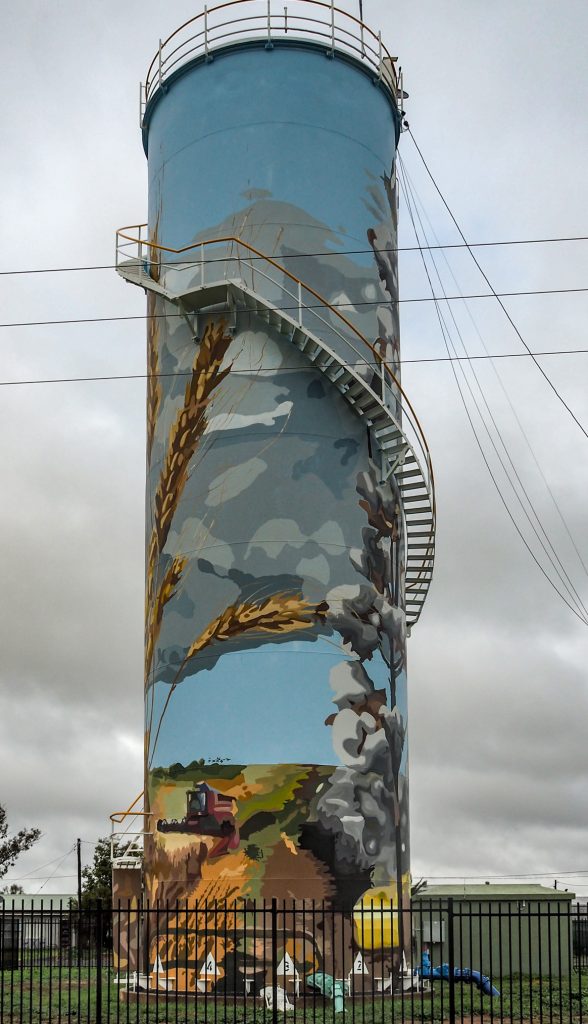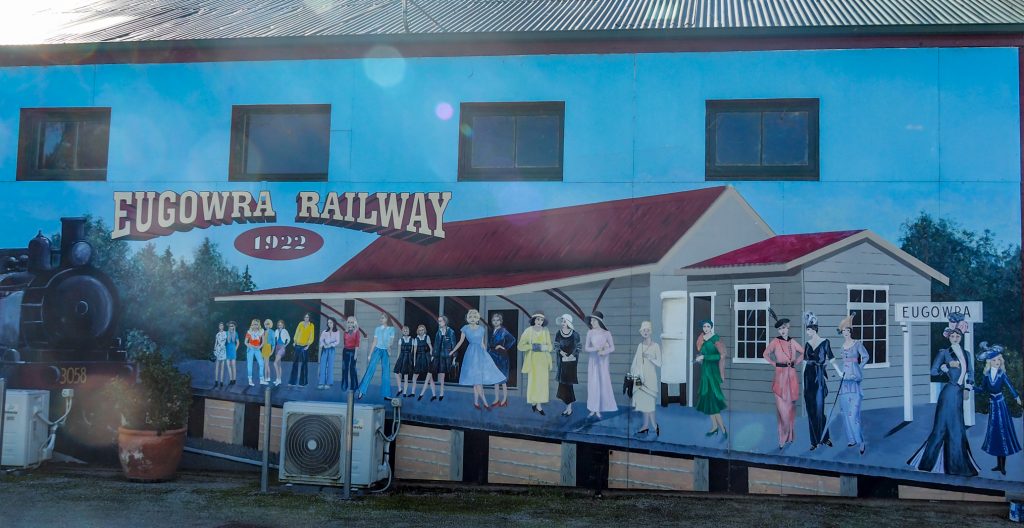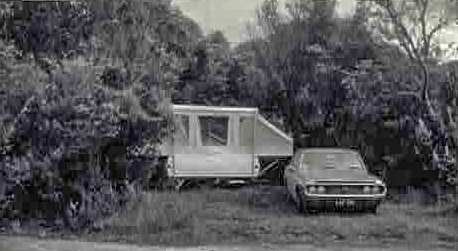I set off from Forbes in the rain and arrived at Coolah in the rain, it rained all day. I was lucky though the rain nearly stopped at each of the three silos I visited on the way. The roads were in terrible condition, lots of potholes, plenty of very rough sections probably the result of lots of rain over recent months. There was water everywhere all the roadside drains were full, as were the creeks and rivers and the paddocks were waterlogged. The country over vast swathes of NSW west of the divide is sooo flat, look in any direction and you just see flat land stretching to the horizon. No wonder the water lies around everywhere, the one positive was that it wasn’t cold.
The first silo was at Nevertire a tiny town which doesn’t show on most maps, but it has a 21 metre high water tower.

The artwork celebrates the main agriculture of the region, sheep, wheat and cotton. The yellow cylinders are bales of cotton at the bottom of the cotton plant. When travelling through this area you pass many cotton depots with acres of these bales neatly stacked in rows. More of our precious water being exported!
The next silo was at Warren and this was another good one. They are building a new sports complex next to the tower and the artwork celebrates the sports which will be played there. The sports being featured are Cricket, Soccer, Swimming and Skateboarding.

Next stop was Dunedoo where the silos had been painted in 2020 on two sides and the other sides painted in 2021 by a different artist. The 2021 side was painted by Daniel Krause, assisted by Jarad Danby and show Daniel’s son reading a book in a wheat field (and a few cotton plants as well).

The first two sides were painted by Peter Mortimore over three months in 2020. The painting is of Winx and her famous rider Hugh Bowman, who was born in Dunedoo. Also featured is Chris Waller, Winx’s trainer. On the side facing the road is some local fauna and flora.

As would be deemed appropriate I needed a dunny by the time I got to Dunedoo and the toilet provided near the silos was state of the art. Press a button and the door unlocks, which is announced by a “voice”, enter and push the green button and the door locks and the button goes red. You are told the “door is locked”. Nothing happens when you push the flush button, but when you push the door button the door unlocks and the toilet flushes. Strangely, it seems the name Dunedoo does not originate from this dunny or any dunny, rather the name is derived from a local Aboriginal word meaning “swan”, which are commonly found in the area’s lagoons.
After a day and night of rain the Coolaburragundy River at the end of the caravan park in Coolah rose just under 2 metres, but was still 1/2 a metre below the level of the park. The ground is so wet that any rain falling runs straight off into the creeks and rivers, though Coolah did get around 35 mm on Thursday and Friday, a considerable precipitation. By the end of Saturday the river had dropped back to its original level, which was reassuring as debris stacked outside some of the cabins in the park showed that the park had been flooded recently. Interestingly the Coolaburragundy River is normally dry.
On Saturday I went for a drive to Coolah Tops National park. The roads had shallow water over them in many places and you had to slow right down as often there are deep potholes hidden under the water. The bitumen road changed to dirt for the climb up to the National Park and it was like driving on a creek bed with many deep erosion gutters cutting across the road. After bouncing around all over the place and travelling very slowly I decided after a couple of Km that I didn’t need to see the park that badly so I turned around and headed for home. Marg and I had visited the park a few years ago.
There was a lovely view up the Coolaburragundy River from the road to the park.
The normally dry Coolaburragundy River was running rapids, a bit unusual for a normally dry river.
Tomorrow will be a rest day and then off to Cranky Rock Nature Reserve for a few days.






































































































































